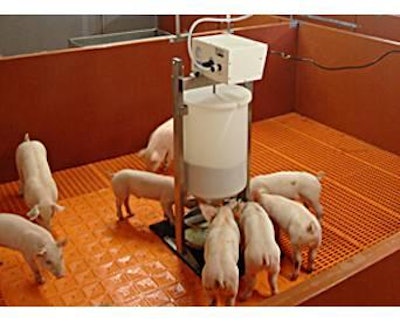
The process of weaning is a particularly stressful time in a piglet's life with a huge impact on post-weaning performance. At weaning, the piglet has to cope with a number of challenges simultaneously; one of the biggest is the loss of its mother - the provider of food, warmth, comfort and a secure social structure.
After weaning, piglets not only have to cope with the removal of their mother, but also with a new environment and new pen mates. In addition, the change of feed form and composition has a dramatic negative impact, leading to insufficient feed intake that leaves pigs with little energy to fight these challenges.
Poor feed intake
Obviously, poor feed intake post-weaning results in slow growth. On the day of weaning, a piglet is drinking around 1 liter of sow's milk and its growth is 300-400 grams per day. Low feed intake immediately after weaning means that the opportunity for effective growth is lost, because piglets have less nutrients and energy to fight off disease challenges. Of course, one of the reasons for poor feed intake is the physical change of food after weaning. Piglets usually have to cope with dry pellets or meal and water dispensed from unfamiliar metal drinkers and troughs.
Gruel feeding
One way of overcoming some of the above problems and especially that of low nutrient intake is providing gruel during the first days post-weaning. Although this practice has been shown to be very effective, it is very labor intensive, and often is practiced on small pig farms. To resolve the issue of labor requirements, a special feeder (Transition Feeder) can be used that automatically prepares and dispenses a warm gruel.
The little-and-often approach helps to maintain constant feed intake. Here it should be noted that sow's milk contains about 20 percent dry matter, and for this reason, gruel with a feed/water ratio of between 1 and 2:1 has been found to be optimum during the two weeks post-weaning. An important point is that the feed should always be mixed fresh and not become stale, whereas feeding times should be adjusted according to feed type, number and age of piglets.
Gruel feeding can be very helpful for rearing surplus piglets from highly prolific sows. Although some farmers foster or leave 'underprivileged' piglets on the sow for longer, rearing the extra piglets on an automated gruel feeding system considerably increases the number of pigs reared per sow a year, as sows become free to reproduce sooner.
Most experts agree in that offering a gruel post-weaning helps maintain piglet feed intake and reduce, or eliminate a post-weaning check and can provide a smooth transition over the weaning and post-weaning period. The early boost to growth can result in pigs growing faster all the way through to slaughter by as much as 14 days.















